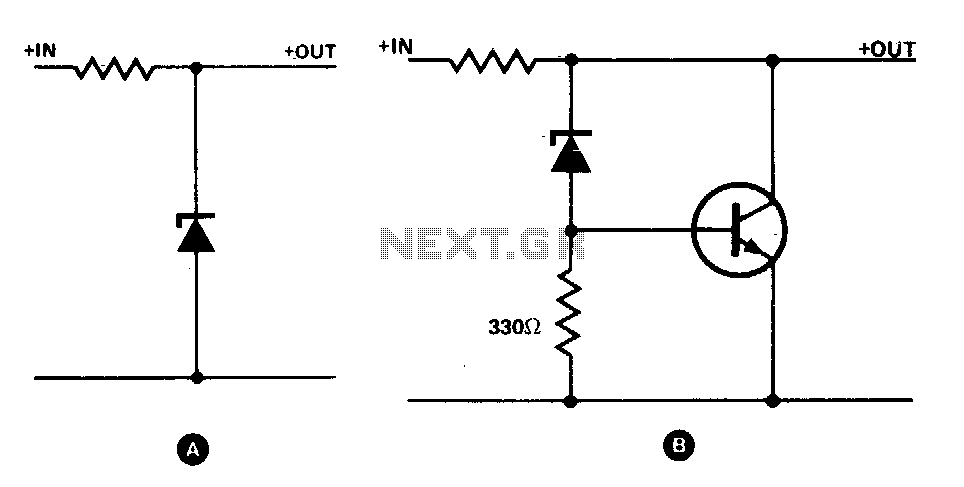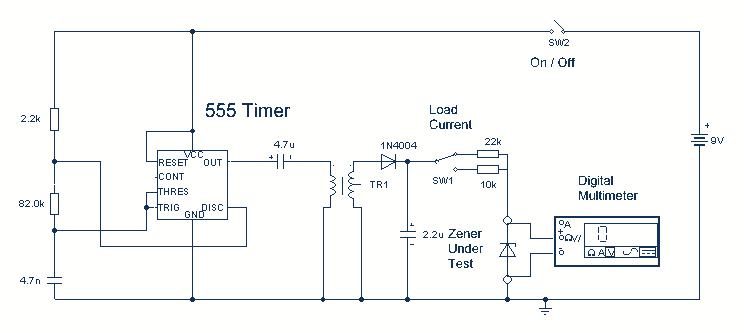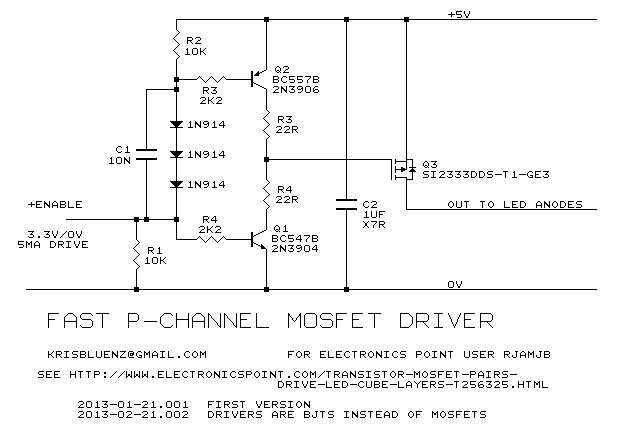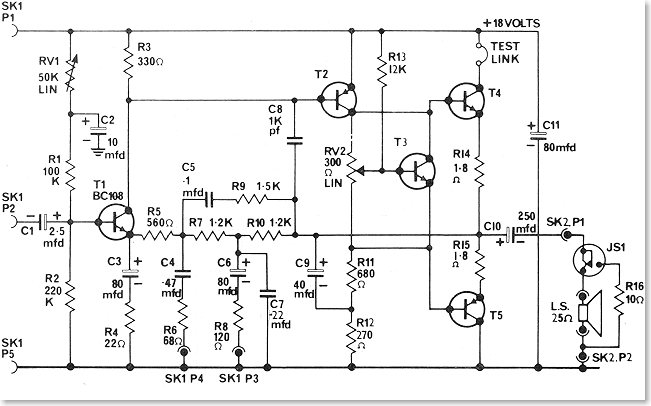
Transistor increases zener rating

The simple zener shunt in configuration A may not handle sufficient current if the zener diode available is of low wattage. A power transistor will perform most of the work for the zener as illustrated in configuration B. Once the zener diode begins conducting, a bias voltage develops across the resistor (330 ohms to 1 kΩ), which turns on the transistor. The output voltage is 0 V greater than the zener voltage.
In this circuit design, the zener diode serves as a voltage reference and is crucial in maintaining a stable output voltage. When the voltage across the zener exceeds its breakdown voltage, the zener begins to conduct, allowing current to flow through it. However, if the zener diode is of low wattage, it may not be able to handle the required current efficiently, leading to potential failure or inadequate performance.
To enhance the current handling capability, a power transistor is integrated into the circuit. The configuration typically involves connecting the zener diode in parallel with the base-emitter junction of the transistor. A resistor, with a value ranging from 330 ohms to 1 kΩ, is connected to the base of the transistor. When the zener conducts, it generates a bias voltage across this resistor. This bias voltage is critical as it turns on the transistor, allowing it to conduct and share the load current.
The output voltage, which is taken from the collector of the transistor, remains at a level that is 0 V greater than the zener voltage. This means that the output voltage is effectively clamped to the zener voltage, ensuring a stable output despite variations in load current. The transistor's ability to handle higher currents allows the circuit to operate efficiently without overloading the zener diode.
This configuration is particularly useful in applications where a stable voltage reference is required, such as in power supplies, voltage regulators, and various analog circuits. The combination of a zener diode and a power transistor provides a robust solution for voltage regulation, ensuring reliable performance under varying load conditions.The simple zener shunt in A may not handle sufficient current if the zener available is of low wattage. A power transistor will do most of the work for the zener as shown in B. Once the zener starts conducting, a bias voltage develops across the resistor (330 O to 1 K), turning on the transistor
The output voltage is 0 V greater than the zener voltage. 🔗 External reference
In this circuit design, the zener diode serves as a voltage reference and is crucial in maintaining a stable output voltage. When the voltage across the zener exceeds its breakdown voltage, the zener begins to conduct, allowing current to flow through it. However, if the zener diode is of low wattage, it may not be able to handle the required current efficiently, leading to potential failure or inadequate performance.
To enhance the current handling capability, a power transistor is integrated into the circuit. The configuration typically involves connecting the zener diode in parallel with the base-emitter junction of the transistor. A resistor, with a value ranging from 330 ohms to 1 kΩ, is connected to the base of the transistor. When the zener conducts, it generates a bias voltage across this resistor. This bias voltage is critical as it turns on the transistor, allowing it to conduct and share the load current.
The output voltage, which is taken from the collector of the transistor, remains at a level that is 0 V greater than the zener voltage. This means that the output voltage is effectively clamped to the zener voltage, ensuring a stable output despite variations in load current. The transistor's ability to handle higher currents allows the circuit to operate efficiently without overloading the zener diode.
This configuration is particularly useful in applications where a stable voltage reference is required, such as in power supplies, voltage regulators, and various analog circuits. The combination of a zener diode and a power transistor provides a robust solution for voltage regulation, ensuring reliable performance under varying load conditions.The simple zener shunt in A may not handle sufficient current if the zener available is of low wattage. A power transistor will do most of the work for the zener as shown in B. Once the zener starts conducting, a bias voltage develops across the resistor (330 O to 1 K), turning on the transistor
The output voltage is 0 V greater than the zener voltage. 🔗 External reference
Warning: include(partials/cookie-banner.php): Failed to open stream: Permission denied in /var/www/html/nextgr/view-circuit.php on line 713
Warning: include(): Failed opening 'partials/cookie-banner.php' for inclusion (include_path='.:/usr/share/php') in /var/www/html/nextgr/view-circuit.php on line 713





